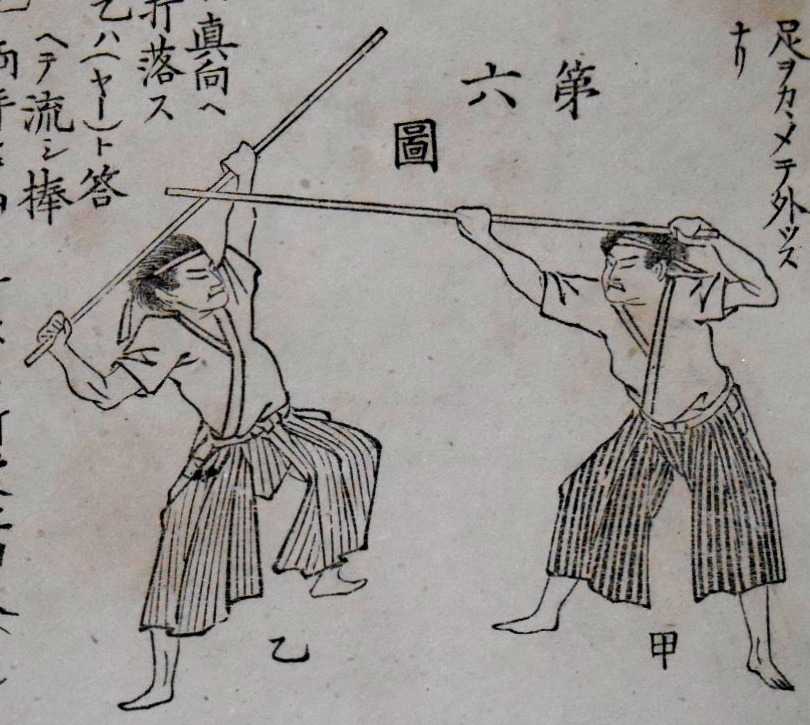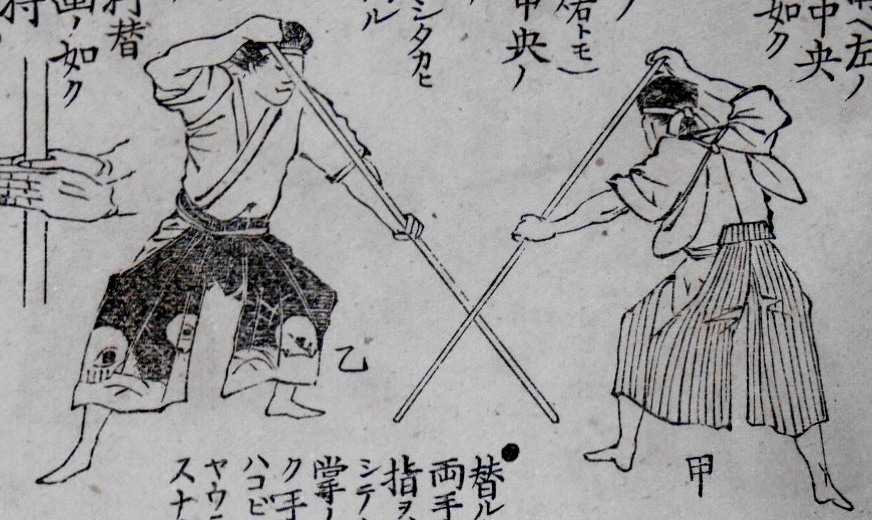Bojutsu at a glance:
What is Bojutsu, and what weapon does it use?
Bojutsu is a martial arts discipline that revolves around the use of a long staff, known as a u0022bo staff.u0022 Bojutsu is part of Okinawan kobudō karate, and its principal weapon is a six-foot staff called a u0022bo staff.u0022
What are the characteristics of Bojutsu?
Bojutsu is a martial arts discipline that often assumes the presence of an imagined opponent wielding a katana, but it also has staff vs. staff techniques. It has many parallels with other Japanese martial arts, including sojutsu, kenjutsu, and naginatajutsu. Bojutsu is great for developing your motor skills and teaches students how to effectively wield long weapons and manipulate space.
What is the importance of Bojutsu in martial arts?
Bojutsu is a core component of various martial arts schools, as it teaches students how to effectively wield long weapons and manipulate space. Bojutsu is also great for developing motor skills. Due to the efficiency of staff techniques, Kano Jigoro, the creator of Kodokan Judo, attempted to integrate bojutsu into Kodokan, but was ultimately unsuccessful.
What is the origin of Bojutsu?
The history of the bojutsu is less well documented than that of kenjutsu in Japan, leading to widespread confusion about its use and development. Bojutsu is believed to have been born on the battlefield when soldiers improvised staff weapons out of broken naginata or yari shafts. The use of a yari is integral to several bojutsu styles.
What are the different techniques and weapons used in Bojutsu?
Bojutsu uses a variety of staff-like weapons under the term u0022bojutsu,u0022 including the jo staff, the hanbo staff, and the six-foot bo staff. Although bojutsu uses a stick as its main weapon, it is not called a u0022stick-fightingu0022 method in Japan but a u0022stick [staff] techniqueu0022 due to the way the bo is used.
Bojutsu is a discipline of Japanese martial arts that revolves around the use of a long staff as its central weapon. Bojutsu is part of Okinawan kobudō karate, and its principal weapon is a six-foot staff called a “bo staff.” Bojutsu, or “bōjutsu,” means “staff technique” in Japanese. (“Bō” as “staff” and “jutsu as “technique”).
See also: Jo Staff: A Stick Designed to Beat Katana
Definition of Bojutsu

Because of its similarities to other Japanese martial arts, the Japanese refer to a wide variety of fighting styles that include staff-like weapons under the term “bojutsu” (also known as “bo art”).
In the Japanese martial art of Bojutsu, practitioners utilize polished, circularly cross-sectioned sticks of about 6 shaku (about 6 ft; 180 cm) in length and refined to a consistent thickness. The bo staff in Bojutsu has a diameter of 0.95 to 1.3 inches (2.4 to 3.3 cm), and it is polished to be slippery.
This bo staff can still be of varying length, width, and form depending on the martial art school. Bojutsu practiced with a staff no longer than four feet is termed “jojutsu” (see Jo staff), while that practiced with a staff even shorter than that is called “hanbojutsu” (hanbo is a short staff).

While the specific names of these techniques may vary from school to school, they all still share the umbrella term “bojutsu.”
The Japanese historical epic “Taiheiki” describes many varieties of rods, such as Kanabō (a rod made of wood and iron) or Tetsubo (a rod made of iron and steel). It is said in the 15th-century “Gikeiki” (“The Chronicle of Yoshitsune”) that there are special staffs with unusual designs, such as those with an octagonal shape (a wooden staff with eight sides) or chigiriki (a flail staff weapon).
Characteristics of Bojutsu

One of the defining characteristics of Japanese bojutsu is that, like other Japanese martial arts, it often assumes the presence of an imagined opponent wielding a katana (just like with the Jo staff). But there are also staff vs. staff techniques.
Bojutsu has many parallels with other Japanese martial arts, including sojutsu (spear technique), kenjutsu (sword technique), and naginatajutsu (glaive technique).
It is also uncommon for schools of other martial arts to include bojutsu into their curriculums, as is the case with many jujutsu dojos.
Importance of Bojutsu

Bojutsu is a core component of various martial arts schools because it teaches students how to effectively wield long weapons and manipulate space (such as Takenouchi-ryu, Kiraku-ryu, etc.).
The reason for this is that the handle and “blade” of the staff are one and the same object.
As an added bonus, bojutsu is great for developing your motor skills. Because of the efficiency of staff techniques, Kano Jigoro, creator of Kodokan Judo, attempted to integrate bojutsu into Kodokan, but was ultimately unsuccessful.
Origin of Bojutsu

Since ancient times, religious ceremonies have been held where bojutsu-inspired techniques have been practiced. Despite being one of the simplest weapons, the history of the bojutsu and the bo staff are less well documented than that of kenjutsu (swordsmanship) in Japan, leading to widespread confusion about its use and development.
The indigenous culture of the Ainu in Japan developed a staff method, including iron-reinforced staff for battle and a punishment staff called “Sutu” (or Seisaibo) for cane punishment. The Yayoi period (Neolithic–Iron Age) site in Okayama City, the Minami Ho ruins, yielded a staff resembling the Ainu’s punishment staff, suggesting its usage in antiquity.
Many Japanese schools teach that bojutsu was born on the battlefield, when soldiers improvised weapons out of broken naginata (“glaive“) or yari (“spear”) shafts. Nonetheless, wooden staffs were in use before yaris, which may indicate that bojutsu served as a foundation for the evolution of yari techniques. The use of a yari is integral to several bojutsu styles.

The bo staff is central to the Japanese martial art of bojutsu. There may be some connection between the various bojutsu schools because of the prevalence of shared technique names like “Goho (five directions)”, “Sashiai (finger joint)”, “Kasanoshita (under the hat)”, “Gorinkudaki” “Mizuhiki”, etc.
In Chinese martial arts, the term “stick fighting” is used to refer to bojutsu, which is an extension of kenpo karate, a fist-fighting technique. Instead of the bo staff, the Chinese use a stick called a “gun staff,” which has a thicker center.
Stick-based fighting styles have existed or been passed on in many cultures around the region. Although bojutsu uses a stick [staff] as its main weapon, it is not called a “stick-fighting” method in Japan but a “stick [staff] technique” due to the way the bo is used.
Bojutsu Today

Because bo staffs are common and inexpensive, bojutsu has been practiced by people of all economic strata in Japan, and there are a plethora of bojutsu schools to choose from. It has also been included in nonlethal restraint tactics by a variety of schools.
Festival performances in Japan sometimes include some type of bojutsu, such as “bon odori” (staff dance), “bo no te” (staff hands), “bojutsu” (staff methods), or even “shishimai” (lion dance). Sometimes the traditional bojutsu martial art tradition is reflected in these performances.
Schools of Bojutsu
- Bojutsu schools:
- Kukishin-ryu (founded in the 14th century and including Bojutsu, Hanbojutsu, and Takagi-ryu)
- Isshin-ryū
- Kaohsiung style
- Chikubushima-ryu style
- Ryozen Chikubushima style.
- Tsubaki kotengu-ryu bojutsu
- Muhen-ryu
- Yoshin-ryu
- Kosan tenjin-ryu
- Okinawan kobudo
- Jojutsu schools:
- Shinto Muso-ryu (called Bojutsu until the mid-Edo period)
- Muteki-ryu (uses a longer staff but is still called a jojutsu together with the shoshin-ryu)
- Imaeda Shin-ryu
- Schools that include bojutsu:
- Asayama Ichiden-ryu
- Shibukawa Ichi-ryu (rokushakubo, sanshakubo, hananeji)
- Araki-ryu
- Imaeda-ryu
- Rikataichi-ryu (Jojutsu)
- Shojitsu Kenrikata Ichi-ryu (Jojutsu)
- Rikataichi-ryu (Jojutsu)
- Asayama Ichiden-ryu
- Kashima Shin-ryu (Bojutsu, Jojutsu)
- Tenshin Shoden Katori Shinto-ryu
- Kashima Shinto-ryu
- Kanshin-ryu
- Hokuso-ryu (Originally a jujutsu-ryu school. Currently, only the jojutsu is transmitted to Fusen-ryu)
- Toda-ryu
- Kiraku-ryu (bojutsu, chigiriki)
- Toda-ryu (Hirosaki clan)
- Shingetsu Musou Yanagi-ryu (Originally Kukishin-ryu Bojutsu)
- Suio-ryu (Jojutsu)
- Sekiguchi-ryū (Jojutsu)
- Sekiguchi Shinshin-ryu
- Sekiguchi-ryu Tomita School (Kotebo, Shakubo, Hanbo, Rokushakubo [bo staff])
- Shibukawa-ryu
- Shibukawa school of the Hiroshima clan
- Sekiguchi Shinshin-ryu
- Takenouchi-ryu
- Rikishin-ryu
- Tatsumi-ryu
- Nagaoka ken-ryu (Originally a comprehensive martial art, but only Bojutsu is extant)
- Nanba Kazumoto-ryu
- Fusen-ryu
- Hontai Yoshin-ryu (bo and hanbo. Originally Kukishin-ryu Bojutsu)
- Yagyu Shingan-ryu (rokushakubo, sanshakubo, hananeji)
- Yoshin-ryu (Originally a jujutsu school that includes naginatajutsu and bojutsu. Hanbojutsu that has been handed down in Yoshin-ryu naginatajutsu still exists.)
- Kurama Youshin-ryu
- Yoshin-ryu
- Yanagigou-ryu (Originally a school of kenjutsu that includes naginatajutsu and jojutsu, but there is a lineage that only teaches jojutsu.)
- Aikijo (Aikido’s cane (jo) technique, using a stick of about 4 to 5 shaku. Depending on the sect, it is also called Taketsubojutsu)
- Shintaido Bojutsu (included in Shintaido)
Many other bojutsu schools have been handed down in rural areas as bo no te (“stick hands”), shishimai (“lion dances”), bon odori (“stick dances”) and matsuri tsuyuharai.
Bojutsu in Out of Japan
Staff and stick based martial arts similar to bojutsu are also practiced in other parts of the world:
- Chinese martial arts – In many schools, both long and short sticks are used (bo and jo, respectively). Several techniques employ the use of two short sticks.
- Western swordsmanship – There is a method for using the ricasso, the uncut portion of the blade, as a stick.
- Quarterstaff is an English long-staff fighting style.
- Donga – bojutsu of the Surma people living in Ethiopia.
- Nakbabka – Maasai tribe’s martial art. A stick method also makes use of two sticks.
- Nguni stick-fighting – stick-fighting method of the Nguni people living in South Africa and Eswatini. There is also a technique of using a short spear with a shield.
- Matrag – a stick-fighting that originated in Algeria. It is also played as a sport.
- Tahtib – Egyptian bojutsu. Demonstrations are performed for tourists and are also used in belly dancing.
- Kapu Kuialua – Hawaiian martial art. Weapon styles have been devised that make use of a variety of sticks, including two staffs and oars.
- Mau rakau – Maori bojutsu. The tool of choice is the taiaha, a stick with a modified point.
- Krabi-krabong – a thorough martial technique that was passed down in Thailand. A cravone, or stick of approximately 6,5 feet (2 m), is used.
- Pencak silat – Southeast Asian martial art. Aside from using sticks and staffs, there are also methods involving bamboo poles.
- Eskrima – Filipino fighting style. Other than bojutsu methods, there are others like employing two short sticks.
- Kalaripayattu – a style of fighting from southern India. Jojutsu is a part of it.
- Silambam – a thorough martial arts style from southern India. Only bojutsu is passed down in the present.


